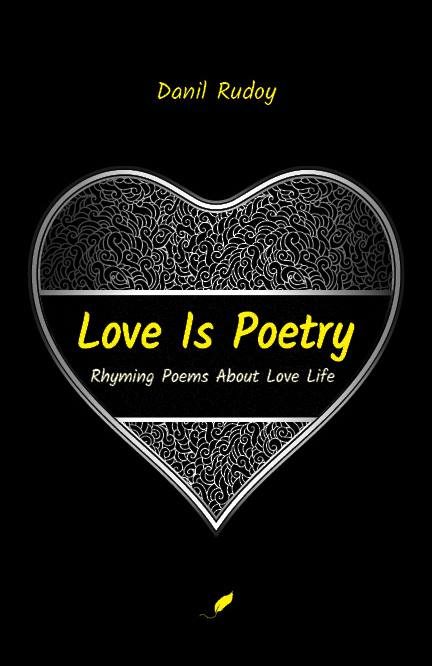The term “confessional poetry” was first used in 1959 after the publication of Life Studies, a poetry collection by Robert Lowell which, according to the book reviewer, read like personal secrets.
Even before the publication of Lowell’s book and the emergence of the confessional school in the late 1950s, poets like John Berryman and Delmore Schwartz wrote works that are now considered confessional poetry. However, Life Studies was a seminal work in the true sense of the word as it inspired some of the major writers of the nascent confessional movement, including Ann Sexton and Sylvia Plath.

Key features of confessional poetry
How does confessional poetry differ from other schools of poetry? Among the key characteristics of confessional poetry are:
- first-person narrative,
- intimate and personal topics, and
- free verse used with outstanding poetic skills.
Let’s examine these features of confessional poetry in more detail.
First-person narrative
The Academy of American Poets defines confessional poetry as “the poetry of the personal or I“, which requires confessional poems to be written in the first person. This device allows readers to emotionally relate to the lyric hero/author.
Telling a story in the first person is risky: if the poet fails to be persuasive, the confession will seem fake. But if everything is done correctly, the reader will be able to fully immerse him- or herself in the author’s noteworthy experiences: a great prize!
Intimate and personal topics
Perhaps the main feature of confessional poetry is its exclusively autobiographical nature.
During its early and most successful times, confessional poetry was in the epicenter of social change as old impersonal poetry turned out unviable in the new realities of American life. The confessional poets started talking about forbidden topics: mental illness, sexuality, suicide, alcoholism, drugs, depression, gender roles, family issues. They freely discussed what was considered shameful and taboo.
Naturally, the criticism of confessional poetry was harsh. Confessional poets were perceived as self-centered egomaniacs and narcissists indulging in their weaknesses and undermining the foundations of true poetry.
Free verse and poetic skill
Free verse is not always an element of confessional poetry, but many such works do not follow rhyme and poetic meter, trying to be as close to colloquial speech as possible.
Rather than simply pouring their hearts out on paper, confessional poets sought to reach new heights of poetic craft. They paid attention to rhyme and prosody, used unexpected allusions, metaphors, and other poetic devices.
Confessional poets
The main representatives of the confessional poetry school are Robert Lowell, Anne Sexton, Sylvia Plath, William Snodgrass, and John Berryman. Let’s get to know them a little closer.
Robert Lowell
In the early 1950s, the American cultural landscape was changing rapidly. The emergence of beat poets forced some authors to reconsider their work which began to seem archaic and overly formal. Robert Lowell was one of these innovators.
He worried that his poems were too silent, old-fashioned, constrained, and unable to convey the lively immediacy of modern American life. The question was how to make poetry more personal without violating the boundaries of privacy.
Although Lowell is known as one of the earliest and most significant confessional poets, his poems escape the looseness of many beat poets. The author’s later works reflected the eternal and insoluble conflict between the wild and the civilized, the artist’s need to reveal and the man’s need to hide.
Skunk Hour
The poem Skunk Hour from Lowell’s seminal collection Life Studies (1959) reflects the poet’s inner conflict and confusion at a time of social and creative change. He tries to reconcile the demands of prudence, on the one hand, and the desire for open and frank poetry, on the other.
Nautilus Island’s hermit
heiress still lives through winter in her Spartan cottage;
her sheep still graze above the sea.
Her son’s a bishop. Her farmer
is first selectman in our village;
she’s in her dotage.
Lowell’s language is replete with words indicating hierarchy (“heiress”, “above”, “first selectman”), isolation (“island”, “hermit”): the very obsolete relics of the past in the rapidly changing conditions of the present moment.
The hermit from the first stanza reflected not only the “aristocratic” views of Lowell’s mother but also the poet’s fears of what he might become: an isolated creature with no future, locked in his social class.
The lyrical hero is engaged in illegal and voyeuristic activities, spying on secret dates of young lovers. Espionage here serves as a metaphor for art, drawing an analogy between poetry and voyeurism.
Robert Lowell recites his poem Skunk Hour
Lowell believed that art could not be honest without revealing secrets. He was drawn to a new, overt type of poetry, and he worries that this is a manifestation of a base impulse, perhaps even a consequence of his mental instability (“My mind’s not right”).
The skunks marching down the main street of the city represent outsiders, rebels, a new force. Lowell admires the potential freedom they symbolize:
Only skunks, that search
in the moonlight for a bite to eat.
They march on their soles up Main Street:
white stripes, moonstruck eyes’ red fire
under the chalk-dry and spar spire
of the Trinitarian Church.
I stand on top
of our back steps and breathe the rich air—
a mother skunk with her column of kittens swills the garbage pail
She jabs her wedge-head in a cup
of sour cream, drops her ostrich tail,
and will not scare.
The structure of the poem is symmetrical: two stanzas are dedicated to the maternal figure; two — to society at the time of a crisis; two — to the individual poet; and two — to the alternative community. In the last stanza, in the skunk mother, Lowell finds the image of the artist he becomes: the poet is like a scavenger, digging in the garbage of humanity and finding food, bringing to light what is hidden.
Anne Sexton
Anne Sexton is considered one of the pioneers of the confessional movement in poetry. The deeply personal tone of Sexton’s poems is explained by their close connection with her personal life.
It’s Sexton’s undisguised emotions toward her family and God that her poems are based upon. Such poetry is painful to read because of deeply personal revelations which touch upon fears, sorrows, and disappointments that are more familiar to us than we would have liked.
Anne Sexton’s poetic genius allowed her to write about the deep essence of things in everyday language.
All My Pretty Ones
All My Pretty Ones is the title poem of Ann Sexton’s second collection containing the pain of the loss of both parents over the course of several months. In March 1959, Ann’s mother died, and in June of the same year, her father did. The title refers to the reaction of Shakespeare’s Macduff to the news that Macbeth killed his wife and children (“All my pretty ones?”):
Father, this year’s jinx rides us apart
where you followed our mother to her cold slumber;
a second shock boiling its stone to your heart,
leaving me here to shuffle and disencumber
you from the residence you could not afford:
a gold key, your half of a woolen mill,
twenty suits from Dunne’s, an English Ford,
the love and legal verbiage of another will,
boxes of pictures of people I do not know.
I touch their cardboard faces. They must go.
Anne Sexton recites the poem All My Pretty Ones
The father’s life is shown through the daughter’s memory of him. She finds newspaper clippings in an old album and travels back in time. His father’s personal story is captured in photographs of him dancing, speedboat racing, and horse riding, reflecting the wealthy and luxurious life he led.
Sexton also finds her mother’s diary which is silent about her father’s drunken years. The heroine decides to keep the diary, like family photographs: these artifacts, she hopes, will help her come to terms with her mixed feelings for her father.
All My Pretty Ones is an example of how memory breaks the inner resistance of the poet allowing her to express her true feelings for her father. The act of closing her father’s house gives her the opportunity to successfully end the relationship with him: at the end of the poem, she moves towards forgiveness and acceptance.
Sylvia Plath
Sylvia Plath was one of the most revered poetesses of the 20th century. She attracted the attention of countless readers who saw her unusual poems as an attempt to systematize despair, violent emotions, and obsession with death.
In her deeply autobiographical confessional poetry, Sylvia Plath explores her own mental anguish, troubled marriage with poet Ted Hughes, unresolved conflicts with her parents, and visions of herself.
As a member of the confessional poetry school, Sylvia Plath was associated with Robert Lowell and Anne Sexton. Ted Hughes once noted that she shared with them the experience of destroying her “self” with its subsequent re-creation or search for a new one.
Some of Sylvia Plath’s most striking poems, including the famous Daddy, touch upon a troubled relationship with an authoritarian father and the feelings of betrayal associated with his death.
Daddy
In this poem, Sylvia Plath writes about her father after his death. This is not your typical obituary poem lamenting the loss of a loved one. Rather, Plath is relieved by his departure from her life and she investigates the reasons for this feeling.
You do not do, you do not do
Any more, black shoe
In which I have lived like a foot
For thirty years, poor and white,
Barely daring to breathe or Achoo.
<…>
I have always been scared of you,
With your Luftwaffe, your gobbledygoo.
And your neat mustache
And your Aryan eye, bright blue.
Panzer-man, panzer-man, O You——
The theme of freedom from oppression and flight from captivity is key in this poem. Despite her father’s death, she is still fascinated by the way he lived.
Plath begins Daddy with her current understanding of what kind of person her father was. She then offers readers some backstory explaining her relationship with him.
The heroine describes her father as a “black shoe” in which she lived for 30 years, a vampire and a fascist. He suppressed her so much that she has to “kill” him to free herself.
Literary historians have established that none of these statements were true or even close to reality but were introduced into the narrative to heighten its poignancy and expand the boundaries of allegory.
The poem is written in enjambement – a poetic transfer within a phrase that gives it incompleteness. Enjambement allows you to bring poetry closer to prose, achieving the effect of everyday speech.
Sylvia Plath recites her poem Daddy
William Snodgrass
Along with Robert Lowell and Sylvia Plath, William Snodgrass is one of the most recognized confessional poets influencing American poetry in the 1960s and 1970s.
Snodgrass’s most important collection of poetry was his first book Heart’s Needle which won him the Pulitzer Prize in 1960. Heart’s Needle was often called the book heralding the advent of confessional poetry but Snodgrass himself didn’t like the term. He resisted the imposition of labels and in subsequent books gradually moved away from the confessional direction.
Heart’s Needle
The title poem of the collection consisting of ten episodes is addressed to Snodgrass’s daughter Cynthia. In it, the poet refers to his divorce in 1953 and remarriage in 1954. The epigraph and title are taken from an Irish tale The Frenzy of Suibne.
William Snodgrass recites an excerpt from the poem Heart’s Needle
Each of the poem’s ten parts takes place in one of the four seasons, from the winter of 1952 to the spring of 1955. All the parts are marked by overwhelming guilt and the speaker’s suffering caused by the separation from his daughter. After her parents’ divorce, the girl spent only short periods of time with her father.
The poet maintains that the presence of his daughter, like her absence, is a needle in his heart because both strengthen his sense of loss. Her curiosity and independence bring him as much pleasure as pain. He cannot imagine his world without her.
Child of my winter, born
When the new fallen soldiers froze
In Asia’s steep ravines and fouled the snows,
When I was torn
By love I could not still,
By fear that silenced my cramped mind
To that cold war where, lost, I could not find
My peace in my will,
All those days we could keep
Your mind a landscape of new snow
Where the chilled tenant-farmer finds, below,
His fields asleep
In their smooth covering, white
As quilts to warm the resting bed
Of birth or pain, spotless as paper spread
For me to write …
Throughout all ten sections, the father-child relationship is constantly linked to broader human and natural processes. A child is born in winter during a war, her consciousness is like freshly fallen snow; it is contrasted with “foul” snow where soldiers freeze. The father is like a peasant tenant in front of an unseeded field or a poet in front of an unfinished sketch.
Subsequently, Snodgrass said that he was looking for a poem that was both personal and universal. He established a formal structure and worked on rhyme and accents that balanced the emotional content. Due to this, Heart’s Needle produces a profound yet controlled feeling.
John Berryman
John Berryman is best known for his Dream Songs (1969), a cycle of 385 personal poems that won him a Pulitzer Prize. In these poems, Berryman invented a style and form that can accommodate a wide range of topics and simultaneously express violent emotions.
However, despite a confessional tone and striving to expose his feelings, the poet prefers to hide by speaking on behalf of the masked heroes. In Dream Songs, we meet Henry: a suffering, reflective, and somewhat demented character similar to Berryman himself.
Emotionality and feelings did not prevent the poet from demonstrating his mastery of the poetic craft. Dream Songs boast a variety of poetic devices such as slang diction and ragged, broken syntax. The poems of the cycle consist of three six-line stanzas, replete with allusions to the events of the past and present as well as literary figures.
Berryman’s frankness influenced his friend Robert Lowell and other confessional poets such as Anne Sexton.
Dream Song 14
Dream Song 14 describes the speaker’s irritation and boredom, as well as what he lacks in life.
The lyrical hero introduces the reader to things that make him bored. He knows he shouldn’t say that, but life is boring to him. He does not enjoy books or people. The great stories of heroes had tired him too. Only in the last lines of the poem does it become clear that the cause of his boredom is loneliness.
Life, friends, is boring. We must not say so.
After all, the sky flashes, the great sea yearns,
we ourselves flash and yearn,
and moreover my mother told me as a boy
(repeatingly) ‘Ever to confess you’re bored
means you have no
Inner Resources. ‘ I conclude now I have no
inner resources, because I am heavy bored.
Peoples bore me,
literature bores me, especially great literature,
Henry bores me, with his plights & gripes
as bad as achilles,
who loves people and valiant art, which bores me.
And the tranquil hills, & gin, look like a drag
and somehow a dog
has taken itself & its tail considerably away
into mountains or sea or sky, leaving
behind: me, wag.
John Berryman recites his poem Dream Song 14
The speaker’s dissatisfaction with the world is clear from the very first lines. His boredom is a heavy and oppressive feeling. This can be seen in the way Berryman arranges the lines, stretching and tearing them in the middle of the phrase, using enjambment. Alliteration is another interesting literary device involving the use and repetition of words that begin with the same consonant.
The poem consists of three stanzas, six lines each. Approximately four of them keep the poetic meter (for example, the first stanza of the poem is written in iambic pentameter). The same can be said about the rhyme pattern which is irregular. Berryman uses the same patterns in the other Dream Songs.
Confessional poetry today
In the 1970s and 1980s, there was a reaction to confessional poetry. The poets who replaced the confessional ones rejected the popular style of free verse and restored meter and rhyme within New Formalism.
However, it is impossible to ignore the impact that confessional poetry has had on literature since the term was coined in 1959. Its influence is still felt today in contemporary poetry and memoirs. In particular, the popular style of poetry slams is close to confessional poetry. Slam poets express their personal experiences on stage and interact openly with the audience, making it part of their performance.
Readers of this article also like:



